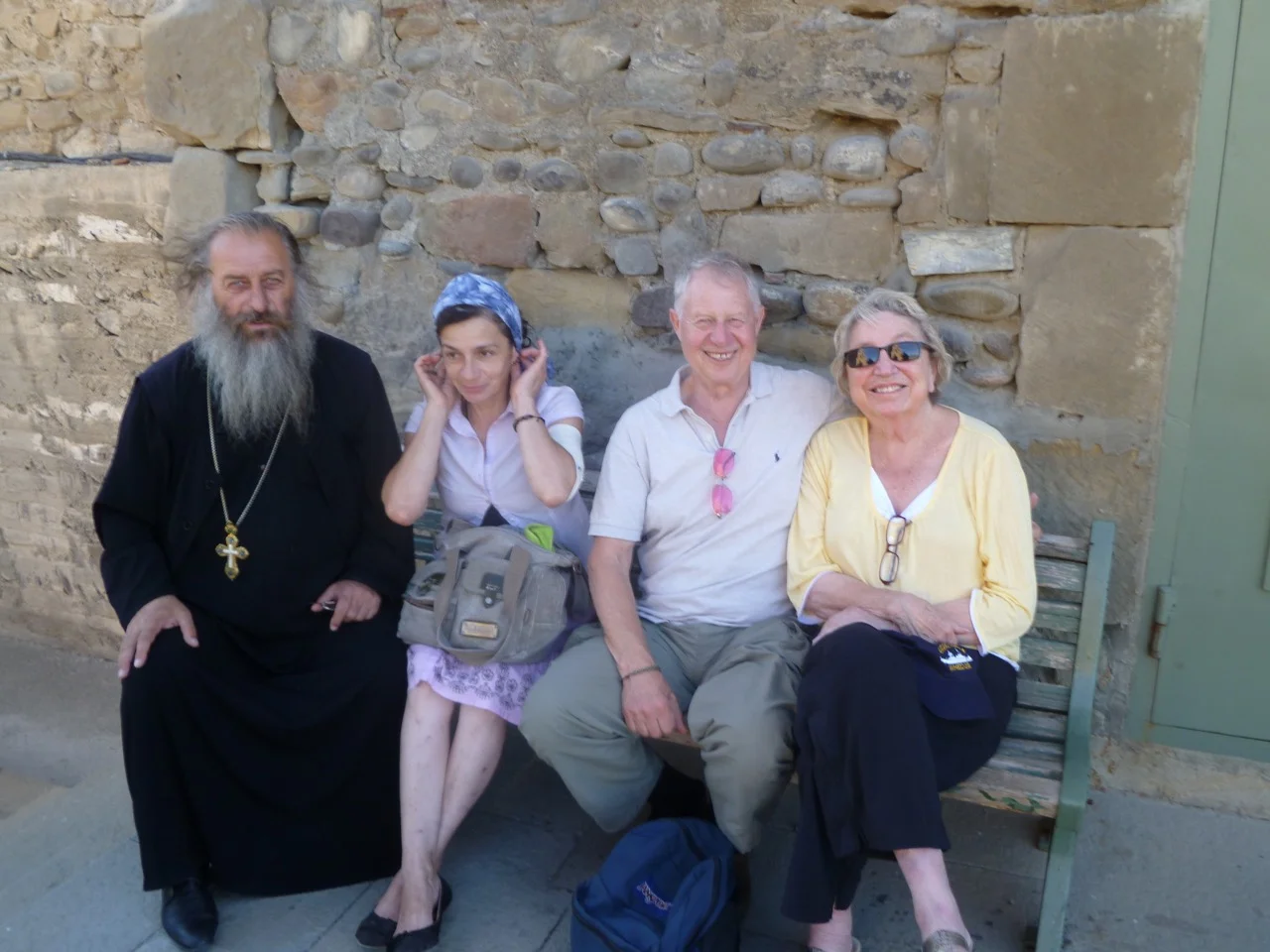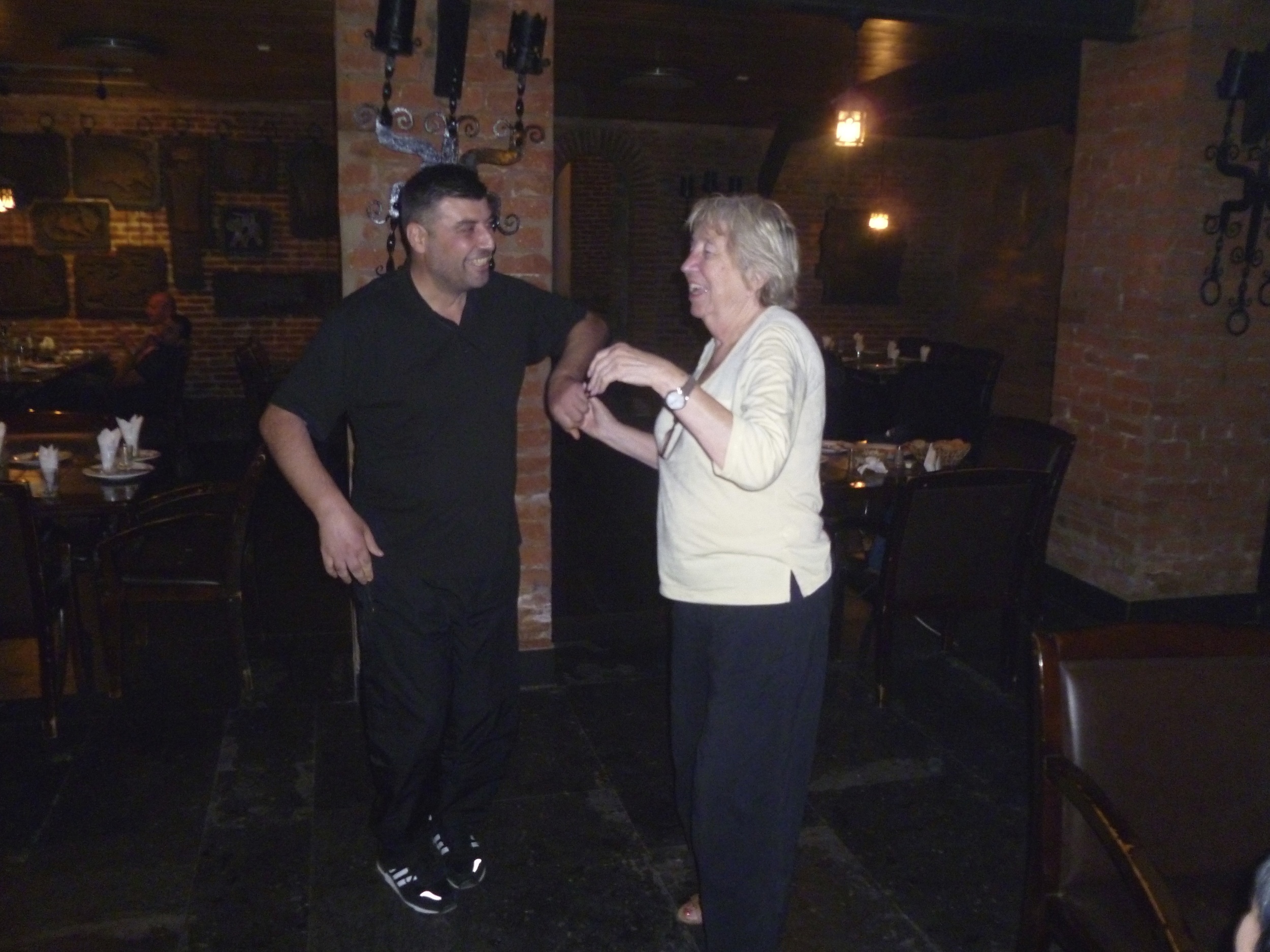Georgia 2012
Georgia, the country, is virtually unknown by most Americans: few know where it is, know anything about it, or know that its capital is Tbilisi (means “warm water” from the hot springs). It’s often confused with the southern American state with the same name. Georgia is part of the Caucasus region, has a population of less than five million and is bounded on the north by Russia, on the east by Azerbaijan, to the south by Armenia, the southwest by Turkey and on the west the Black Sea. The old silk road passed through Georgia at the crossroad between Europe and Asia.
Because of its central location and being sandwiched between major aggressive nations including Persia (now Iran), the Ottoman Empire (now Turkey) and Russia, Georgia has been fought over and repeatedly conquered for the past several thousand years. This is still happening with two regions of the country being claimed and occupied by Russia: Abkhazeti in the northwest and Atchara in the southwest. We were advised not to drive into these areas as there could be serious problems, whatever that meant.
The region of Ossetti in the northeast is also in dispute and Russian troops and tanks were still there when we visited in 2012, even though actual combat had ceased in 2008.. That’s another place we were told to avoid. It seems that Russia, under Putin, is again having imperialistic thoughts and Georgians, who have been independent only since 1991, are nervous that the Russian bear may again be on the rampage. The US was reluctant to interfere in 1998 when Russian military crossed into Georgia. The US and other nations don’t want to mess with powerful Russia and, perhaps because of its oil, Russia is feeling wealthy and powerful. In the Georgia National Museum we saw the horrors that this country endured from many years of Soviet occupation. It will be terrible if history repeats itself and another chapter of Russian occupation begins.
Georgia has limited tourism and few Americans come here. Tbilisi is a great city with a population of just over a million and a tourist infrastructure which is underutilized. There are several first class hotels and an endless number of good restaurants and bars, and nothing is crowded. The people are friendly and hospitable and the food is delicious, varied, healthy and inexpensive.
Just about everything is in English, as well as Georgian, and most everyone speaks Russian, especially older people. Georgia was part of the Soviet Union for more than fifty years and one gets the impression that older people generally miss the communist days when everyone was more or less taken care of. The Georgian alphabet is completely undecipherable to English speakers: it’s a jumble of scribbles that make Russian Cyrillic look easy.
Tbilisi is quite attractive with mountains in the distance, winding cobblestone streets, a river dividing the city’s two sides, a cheap and convenient metro (ninety cents US) and a zillion cabs that magically appear whenever you want one, and you can go just about anywhere in town for two or three dollars. The city is magical at night with up-lighting on many public buildings, fortresses and bridges. Reminds me somewhat of Rome at night.
Tbilisi is a city that most tourists would enjoy. It has lots to offer and in many ways is similar to other popular European capitals fifty or more years ago, before they were discovered by hordes of tourists. I suspect that in the future travel agents in the US will learn about Tbilisi and start offering it as an option to cities such as Istanbul and Rome. The cruise ship lines may also offer Batumi, on the Black Sea, as part of a cruise package. If and when that happens prices likely will double and the glory days of cheap and crowd-free Georgian tourism may be over, as has happened in so many other cities and countries.
While Georgia is centrally located in the Caucasus (Eurasia), it’s not close to major European cities and is far from the US: which perhaps is a reason for the lack of tourists. Tbilisi is roughly seven hundred miles from Istanbul, Tehran and Baghdad. It’s about one thousand miles from Moscow and six thousand miles from New York.
Unlike its neighboring countries of Turkey, Armenia and Azerbaijan, Georgia does not require a visa from American or European visitors. The government recognizes that tourism is profitable and does whatever it can to foster the growing tourist industry. Georgia doesn’t have the same border crossing restrictions that its neighbors have; you can easily cross over into adjacent countries, except Russia.
We spent five days exploring Tbilisi, which was easy because of the ubiquitous and inexpensive taxis. I write down the name of where we want to go: museum, restaurant, shopping area, and ask an English speaker in the hotel to write it in Georgian or Russian which I then show the taxi driver. None speak any English and they all speak Russian. It’s important to ascertain price before getting into the taxi since there are no meters. The drivers invariably get lost and stop several times to ask directions, so a one mile ride can easily become three or four miles. No problem, since you agreed on a price and they never ask for more, and you get a nice tour of another part of the city. I’m certain there are no requirements or tests for driving a taxi since they’re always getting lost.
One thing that is curious about the taxi drivers is that every time they pass a church they always cross themselves, two or three times, and there are churches everywhere. Probably not a bad idea given the way they drive. They also insist you wear a seat belt if you’re up front which is good since we saw so many smashed windshields undoubtedly caused by those who chose not to wear a belt.
The currency here is the lari, also called the gel for Georgian lari. The exchange rate in 2012 was 1.64 lari to a dollar so the lari was worth about sixty cents US. Because the dollar was very strong everything seemed inexpensive. Generally, everything cost less than half what we pay in the US.
We hired a car and driver and went to Gori, the town where Stalin was born, to see the Stalin Museum, built by the Soviet government in 1957 three years after his death. Stalin was born in Georgia, not Russia. We paid our two dollars admittance fee and were given a free personal guide who spoke English, a woman in her late 60’s who spoke with a heavy Russian accent and who was very “Soviet.” She explained in great detail Stalin’s life, from when he was a boy in Georgia studying to be a priest through the revolutionary days, the second world war and the cold war period. Lots of photos, statues, etc. all describing how Stalin was such a “great man” and how he converted Russia from an agrarian country into a world power. Also on display was the personal railway car that Stalin used for travel; he was afraid of flying. Until just before our visit, the museum had nothing about his terrible purges which killed tens of millions of Soviet citizens.
That changed several years before our visit when the museum added a small room showing photos of victims and gulags. I asked the guide who the people were that were killed or sent to Siberia and she choked up and with tears said they were innocent people who had done nothing wrong. I suspect some of her friends or relatives may have been victims.
Apparently many people in Stalin’s home town of Gori still have fond memories of him. When the government pulled down his statue, which was the last one remaining in Georgia, they had to do it late at night with police holding back the protesting crowds.
After spending a week in Azerbaijan and another week in Armenia, we returned to Georgia by car, crossing the Armenian border (which is quite an experience with no English spoken and lots of sign language) and drove to Batumi on the Black Sea where we spent three days. I must say that driving in Georgia is a challenge, perhaps the most difficult driving I’ve ever done. The drivers are unbelievably aggressive and passing is reckless and dangerous. It’s unnerving to constantly see cars and trucks coming straight at you in your lane and then veering to the side at the last second- very scary. I don’t recommend driving in that country for the faint of heart.
Batumi was a pleasant surprise: it has a lovely old quarter with a colonial flare that reminded us of Cartagena, Columbia. The city is an important Black Sea port with a long history going back to Greek and Roman days. In recent centuries it was tossed back and forth between the Ottoman Empire, Russia and Turkey (it’s very close to the present Turkish border). During its Soviet occupation, it was used as a resort for wealthy Russians. The old section retains its beautiful Italianate 19th century architecture, in stark contrast to the ugly Soviet housing found throughout much of Georgia. Batumi is the terminus for the Baku (Azerbaijan) Batumi oil pipeline which was completed about 100 years ago and transports Caspian Sea oil by tanker to Turkey and European countries.
After three days in Batumi we hired a car and driver to take us across the border to Trabzon, in Turkey, where we had a rented car waiting for us. We drove for a week down the Turkish Black Sea coast to Unye, across to Cappadocia, then south to Mersin on the Mediterranean Sea and finally west to Antalya. We flew from Antalya to Istanbul and home from there.
Art

















































